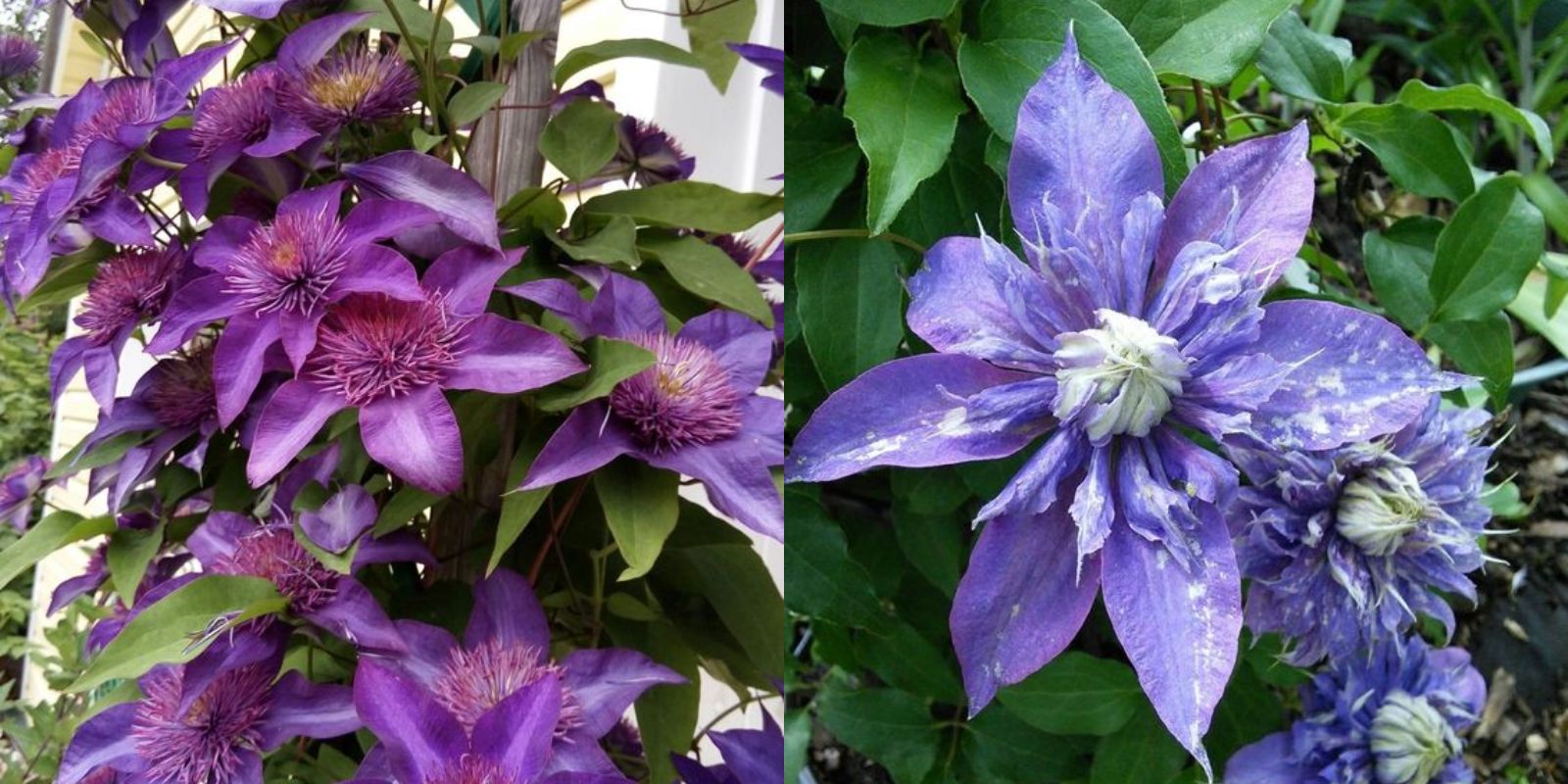Clematis ‘Vyvyan Pennell’ is a dazzling perennial that adds a burst of vibrant color and elegance to any garden. Known for its large, rich purple flowers and robust growth, this clematis variety is a favorite among gardeners who appreciate its striking beauty and relatively easy care. This article will guide you through the essential steps to successfully grow and maintain Clematis ‘Vyvyan Pennell,’ ensuring your garden enjoys its spectacular blooms for years to come.
1. Choosing the Right Location
Sunlight Needs:
Clematis ‘Vyvyan Pennell’ thrives in full sun to partial shade. Ideally, it should receive 6-8 hours of direct sunlight daily. The sun helps to produce the vivid purple blooms that this clematis is known for, while partial shade in the afternoon can help protect it from the harshest sun rays and prevent leaf scorch.
Soil Requirements:
For optimal growth, Clematis ‘Vyvyan Pennell’ requires well-draining soil that maintains a neutral to slightly alkaline pH (6.0 to 7.0). The soil should be rich in organic matter, so incorporating compost or well-rotted manure into the planting area can provide the necessary nutrients. Good drainage is crucial as clematis roots are susceptible to rot if waterlogged.
2. Planting Clematis ‘Vyvyan Pennell’
Timing:
The best times to plant Clematis ‘Vyvyan Pennell’ are in spring or early fall. Planting during these seasons allows the plant to establish its roots before the extreme temperatures of summer or winter.
Preparation:
- Digging the Hole: Dig a hole that is twice as wide as the root ball and just as deep. This gives the roots ample space to spread and establish.
- Soil Mix: Mix the extracted soil with compost or well-rotted manure to enhance soil fertility and drainage.
Planting Steps:
- Positioning: Place the plant in the center of the hole, ensuring that the top of the root ball is level with the surrounding soil. Planting too deep can lead to root rot, while planting too shallow may expose the roots to drying out.
- Backfilling: Fill the hole with the soil mixture, gently firming it around the base of the plant to eliminate air pockets.
- Watering: Water thoroughly after planting to settle the soil and ensure that the roots are well-hydrated.
3. Watering and Mulching
Watering:
Clematis ‘Vyvyan Pennell’ requires consistent moisture, especially during its active growing season. However, overwatering can lead to root rot, so it’s important to maintain a balance. Water the plant deeply at the base, rather than from above, to prevent the foliage from becoming wet. Aim to keep the soil consistently moist but not soggy.
Mulching:
Applying a layer of mulch around the base of the clematis helps retain soil moisture, regulate soil temperature, and suppress weeds. Use organic mulch such as wood chips, bark, or straw, and keep the mulch a few inches away from the plant stem to prevent potential rot.
4. Pruning Clematis ‘Vyvyan Pennell’
Timing:
Pruning should be done in late winter or early spring before new growth begins. This timing helps the plant recover quickly and encourages robust flowering.
Pruning Method:
- Remove Dead or Weak Stems: Cut back any dead or weak stems to promote healthy new growth. This helps to rejuvenate the plant and improve air circulation.
- Shape the Plant: Trim back the old growth to a healthy bud or new shoot. Avoid cutting into the old wood if the plant has not yet started producing new growth.
5. Supporting Growth
Trellis or Support:
Clematis ‘Vyvyan Pennell’ is a climbing plant that needs support to grow effectively. Provide a trellis, arbor, or sturdy support structure for the plant to climb. Secure the stems to the support as they grow, using soft ties to avoid damaging the plant.
Training:
Regularly guide the growing stems onto the support to ensure an even and attractive growth habit. This practice helps the plant cover the structure efficiently and enhances its visual appeal.
6. Fertilizing Clematis ‘Vyvyan Pennell’
Feeding Schedule:
Feed the plant with a balanced, water-soluble fertilizer or one specifically formulated for clematis. Apply the fertilizer in early spring as new growth begins, and again after the first flush of blooms to support continued flowering.
Application:
Follow the manufacturer’s instructions on the fertilizer package for the correct application rate. Avoid over-fertilizing, as this can lead to excessive leaf growth at the expense of flowers.
7. Pest and Disease Management
Monitoring:
Regularly inspect your clematis for signs of pests such as aphids, spider mites, or slugs. Look for symptoms like distorted leaves, webs, or holes in the foliage. Treat infestations promptly with insecticidal soap or other appropriate methods.
Disease Prevention:
Watch for fungal diseases like powdery mildew or wilt. Ensure good air circulation around the plant, avoid overhead watering, and remove any diseased plant material. Using organic fungicides or other treatments can help manage these issues.
Conclusion
Clematis ‘Vyvyan Pennell’ is a spectacular addition to any garden, offering stunning purple blooms and lush green foliage. By following these guidelines for planting, watering, pruning, and supporting your clematis, you can ensure a vibrant and healthy plant that will enhance your garden’s beauty year after year. Embrace the joy of growing this magnificent clematis and enjoy its impressive floral display.
Transform your garden into a blooming paradise with Clematis ‘Vyvyan Pennell’. Its vibrant purple flowers and lush growth will captivate all who see it. 🌸💜

